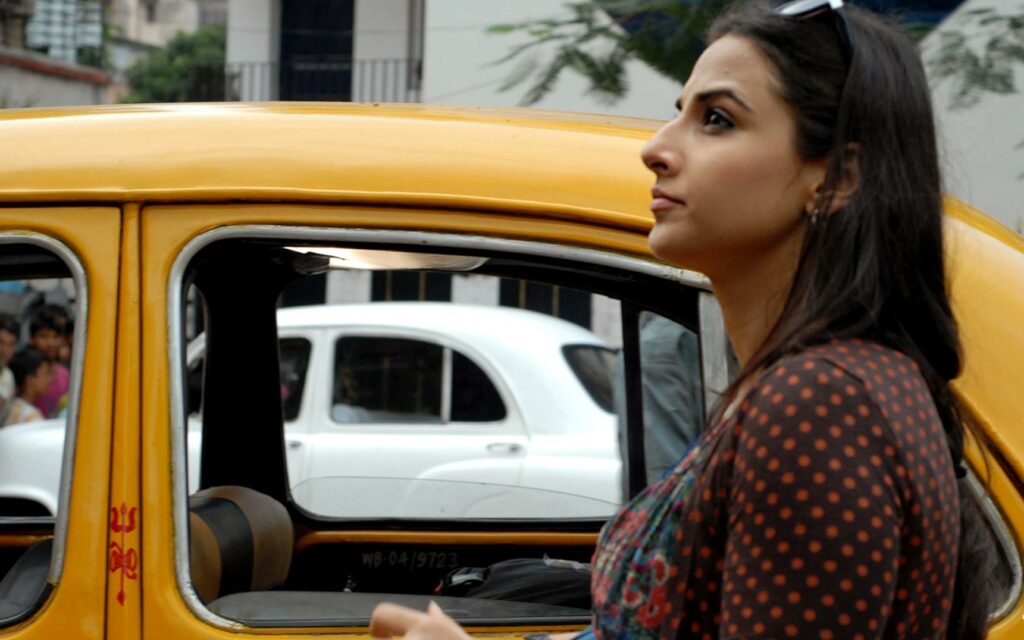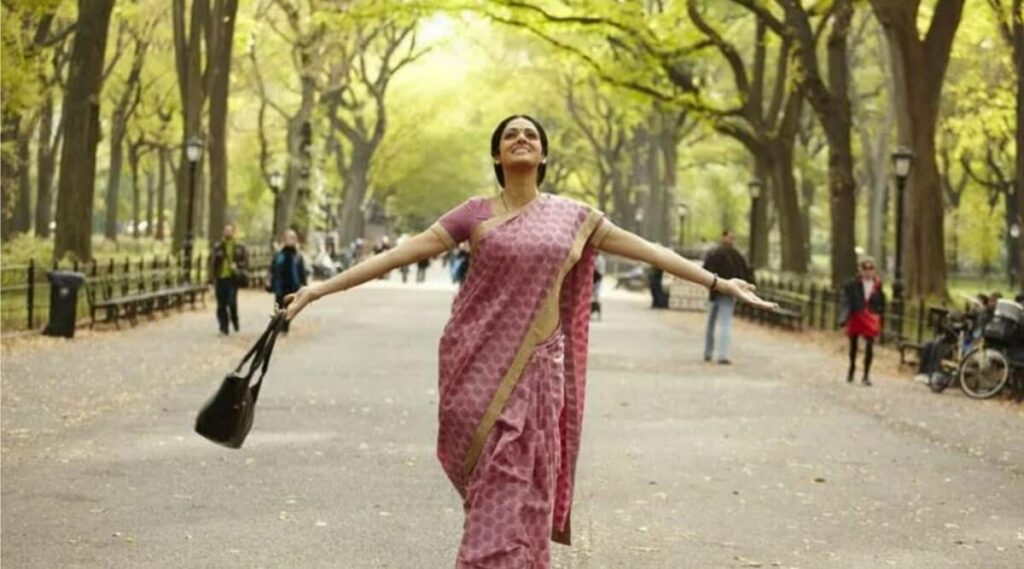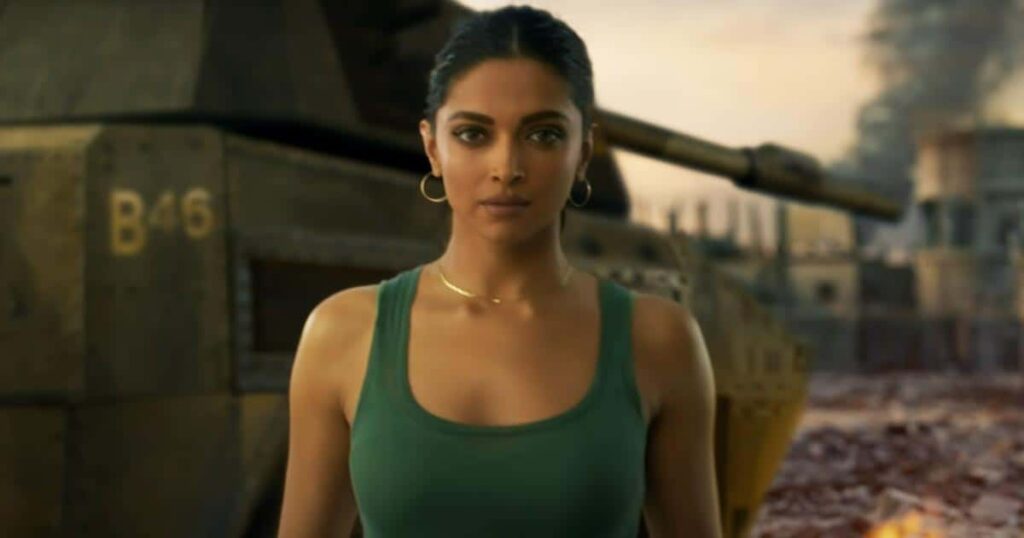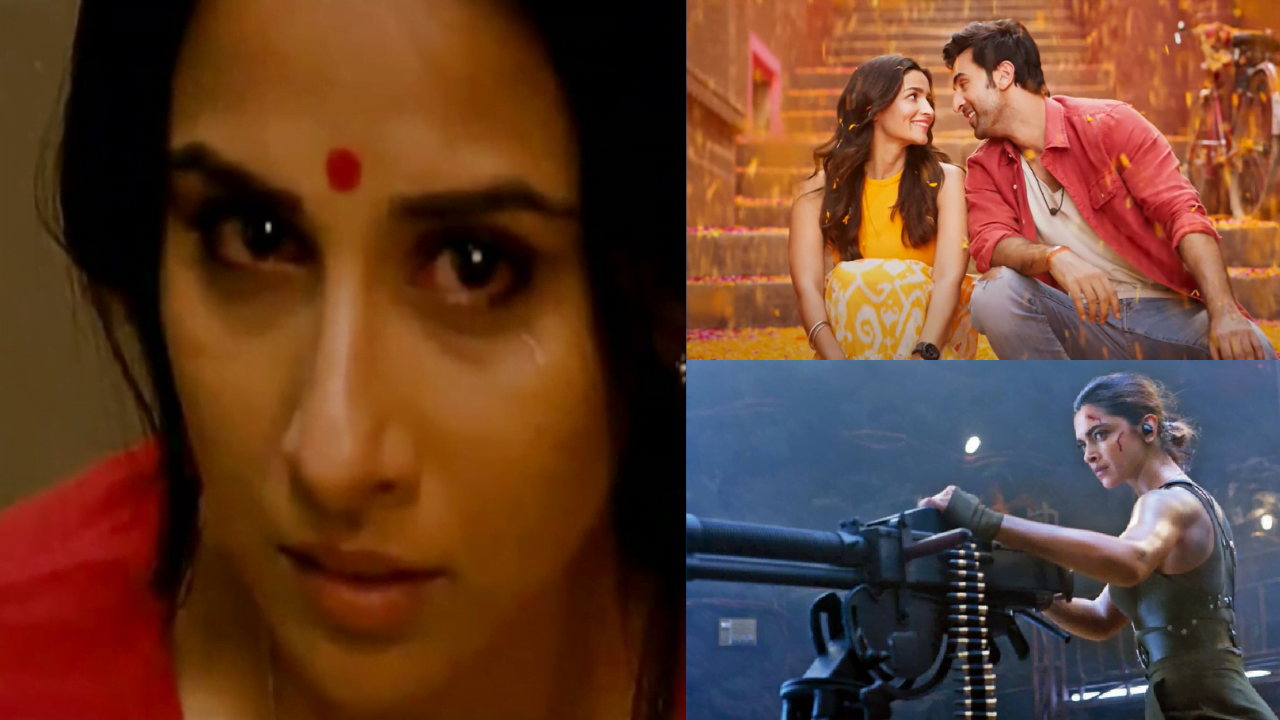The lack of proper representation or misrepresentation of female characters in Bollywood is an ongoing lament. The debate on women’s limited role in Bollywood — both on-screen and off-screen — speaks for feminist intervention. It is required as Bollywood is not just a viable source of entertainment, instead, to a great extent, it represents the social consciousness of the country.
Many progressive leaps have been taken in many Bollywood films, for instance, the emergence of many so–called ‘female-oriented‘ or ‘women-centric‘ plots. However, the question remains how potent are these techniques for actual socio-political change?
Are they just tokenistic, carnivalesque narratives or do they suggest a serious expansion of the term ‘hero‘ to encompass female protagonists?
Vidya Balan’s films have been commended for her overarching screen presence which necessarily makes a hero out of her. Dirty Picture, Bhool Bhulaiyaa, and Shakuntala Devi are a few of her films which depict her effective acting and central position in the narratives. Yet, it is in the film Kahaani that her dominant on-screen personality is matched with an equal feminist plot.
The film emphasises the primary importance of Vidya Balan’s character, also named Vidya, through its posters, casting, and the privileging of her point of view throughout the film. This is complemented in the narrative by the eventual trumping of Vidya over the male police authority and male villains alike as she outwits them all.
However, being a hero, it is not her masculine characteristics that are highlighted; instead, being pregnant, she is presented as the epitome of femininity. It is the preconceived notions associated with femininity as weak and harmless that the plot challenges and weaponises to ensure Vidya’s victory. It is not despite her womanly garbs that she emerges as a valorous hero, but because of her multiple, feminine attributes which enable her heroism.

Sridevi-starrer, English Vinglish, is another woman-centric film which does not undermine the feminine aspect of the heroine but instead makes it valuable. Shashi, the protagonist of the film, is an under-appreciated homemaker who takes the journey towards self-assertion and self-realisation. As the film progresses, her homemaking skills such as cooking are rephrased to identify an “entrepreneur” within her.
The focus of the film is not on her radical transformation from a meek homemaker to an outgoing, assertive, English-speaking woman. Instead, the film underlines the erroneous views of her family which could not value her for her existing qualities.
Shashi’s self-realisation is not in her transformation but in her recognition that she was already worthy of respect even without her ability to speak English.
All of these Bollywood films ultimately validate femininity as a way to express heroism. They are successful in subverting the conventional meaning of ‘hero‘ as possessing quintessentially male qualities. They offer an alternate way of envisioning heroism which is made up of not only female characters but also potent femininity.

These narratives stand out in comparison to other female-oriented works which either fantasise about female heroism or just superficially present female protagonists who mimic male qualities or need male intervention. These narratives are just tokenistic portrayals of female voices as they use strong women characters as entertainment devices.
Films like The Dirty Picture, Fashion, and Heroine have attempted to present strong female leads who battle the patriarchal frameworks of the glamour industry.
In a metanarrative style, they have tried to unveil the pitfalls of the entertainment world to show that the glorified images available to the audience are manufactured through misogynist outlooks, sexual exploitations, and underhand politics.

However, what these narratives have ultimately done is reinforce the sexism of the industry by primarily catering to the male gaze. To depict the commodification of women in this industry, these female protagonists are commodified on screen.
These Bollywood films employ sexual scenes and songs which objectify women as tantalising techniques for luring the male audience. Ultimately, the feminist potential of these films gets overshadowed by these attempts to fantasise about the heroine.
Certain films like Mardaani and NH10 adopt the opposite way to find a feminist intervention. They give masculine semblance to their female leads who engage in gripping action and fighting scenes. The main shortcoming of these films is that they try to juice the entertainment value of presenting women in physical action and agitation. More than encapsulating a social commentary or change, their focus is still limited to the hero vs villain dynamic of traditional action films.
These films only provide a safe space of the film screen to exercise such transgressive femininity. The world of the film in its unrealistic action is shown as ultimately incompatible with the real world. All it does is purge the aggressive energies of these women by limiting them to the fictionalised space of the film. This masculinised women-in-action is then a superficial attempt which provides entertainment value more than a useful social comment.
At the same time, some films which ostensibly revolve around women characters employ male protagonists to facilitate these female-oriented plots. Chak De! India has an impressive cast of female leads representing women’s participation in sports; however, the film often becomes a journey to redemption for the sole male protagonist, Kabir Khan.
Despite the portrayal of the spirited comradery and rivalry among the distinctive female protagonists, it is the character of Shahrukh Khan who binds the whole narrative together.
In another, quite different film, Ek Ladki Ko Dekha Toh Aisa Laga, queer relationship is explored. At the core of the film is the closeted lesbianism of the protagonist Sweety. However, instead of making Sweety and Kuhu (her romantic partner) at the centre of the events, the relationship between Sweety and her suitor (Sahil) is explored.
Sahil, eventually, emerges as a saviour figure for Sweety — fighting her battles against her family and society. It is the privilege given to male characters and their heroism in female-oriented plots which undermines the scope of feminism in these plots.
Yet, all these films have some merit over the recent proliferation of machoistic, hypermasculine narratives which use female characters as mere plot devices. It is especially the big-budget dramas which create larger-than-life male protagonists and simultaneously create heroines with diminished importance.
Firstly, there is the clichéd use of the Madonna/whore trope in many of these films. A binary between the good and the bad woman is created which betrays the patriarchal sensibility of skewed moral judgments. Bhool Bhulaiyaa 2 has recycled this trope to capitalise on the horror potential of the doppelgänger figures. The film lightly plays with this binary while obfuscating issues of classism, patriarchal marital structures, and witch-hunting.
In other cases, female characters emerge as symbolic figures — necessary only to further the hero’s arc. Films like Ek Villain Returns and Brahmastra have female protagonists performing the limited roles of designated love interests.
This follows an old tradition in Bollywood where the female characters are only important in their connection to the male ones. They either provide the moral purpose to the hero’s struggles or become emotional fuels to drive the hero into action.
These films are no different as, in the former, the heroine is used to trigger a revenge plot; and, in the latter, the heroine spurs the hero’s superheroic powers with his ability to love. Both films have dynamic action sequences, epic-scale heroes, and the possibility of bigger social implications. However, in both films, the heroines occupy marginal positions as they hardly participate in these large impactful moments.

Finally, in some cases, female characters can function as mere comic relief. For instance, in films like Pathaan and Shehzada, the most memorable presence of the female characters is their participation in songs. The hero’s journey against various life struggles needs to have these comic interludes where women serve as pleasurable distractions.
In both films, the hero in his national and personal mission, respectively, often engages in light-hearted banter and occasional dance moves with the heroines. The romantic relationship between the hero and the heroine is not of central significance in these films; it is the side angle which is only there to provide momentary relief to the hero and the audience alike.
This means that the heroines are reduced to subordinated positions in these films— performing the conservative roles of being the hero’s physical and emotional solace.
In conclusion, women’s representation in Bollywood is fraught with contradictions and larger gender politics. There are certain valuable feminist interventions where women and their feminine qualities are appreciated and made potent heroic devices.
On the other hand, some of the women-centric films fail in creating any effective social impact as their focus is still largely on the entertainment value.

Some of the most recent films, however, have returned to regressive portrayals as they are concerned with hypermasculine representations and towering male heroes. Comprising of big names, big budgets, big actions, and big spectacular scenes, they have limited space available for a nuanced representation of women.






Most Bollywood actresses are models turned actresses who know little about acting. To compensate for lack of talent, Bollywood actresses choose to do item numbers, wear, short dresses, bikinis, etc. This is a quick way to earn money, fame, recognition, and attention. From movies to promotions and award functions, actresses wear very revealing attire. Actresses objectify themselves. Even TV actresses doing traditional roles wear sarees with very small blouses to make sure that their body is revealed. Lehengas are worn with blouses the size of a bra. Cleavage, navel, bare backs are good for TRPs. Alongside women even Indian men have started watching Hindi serials.
Another way to earn fame and recognition is to work with a Khan. Salman Khan alone launched Zareen Khan, Daisy Shah, Sneha Ullal, Sonakshi Sinha, Athiya Shetty, Bhoomika Chawla, Shehnaz Gill, Palak Tiwari, Mahima Makwana, Saiee Manjrekar and many more. Even top actresses like Ashwariya Rai and Katrina Kaif got recognition after working with Salman Khan. When Katrina Kaif thought that she had become a star after having worked with the 3 Khans (Ek Tha Tiger, Jab Tak Hai Jaan, Dhoom 3) she went solo in 2016 with movies like Baar Baar Dekho and Fitoor but both flopped. She then went back to Salman Khan with movies like Tiger Zinda Hai and Bharat. Needless to say, both were superhits. Anushka Sharma’s career took off with her very first movie, Rab Ne Bana Di Jodi, with Shah Rukh Khan, a super hit. She then worked in a number of flop movies until Jab Tak Hai Jaan, again a super hit with Shah Rukh Khan. There are many such examples. Just look at the number of actresses today whose first movie with a Khan resulted in a successful career.